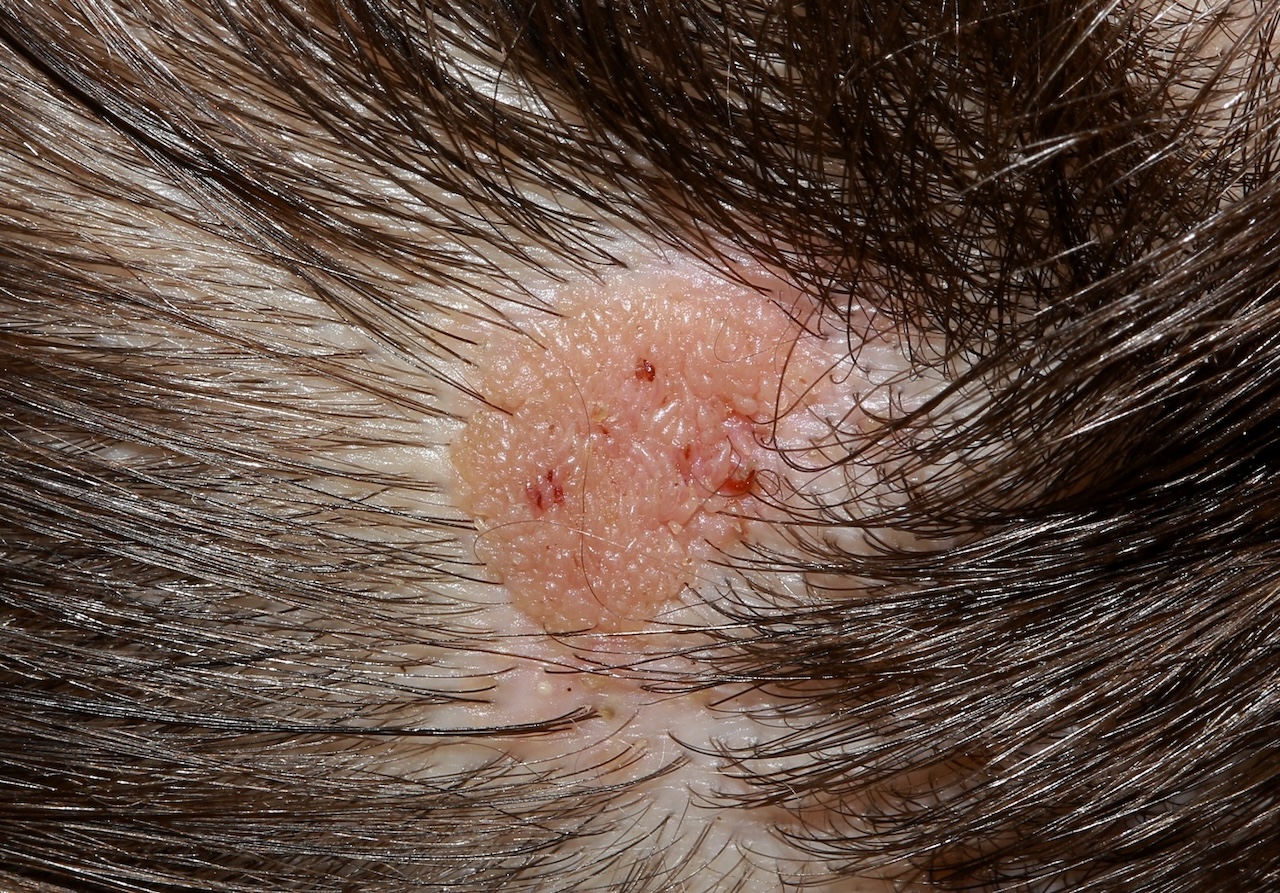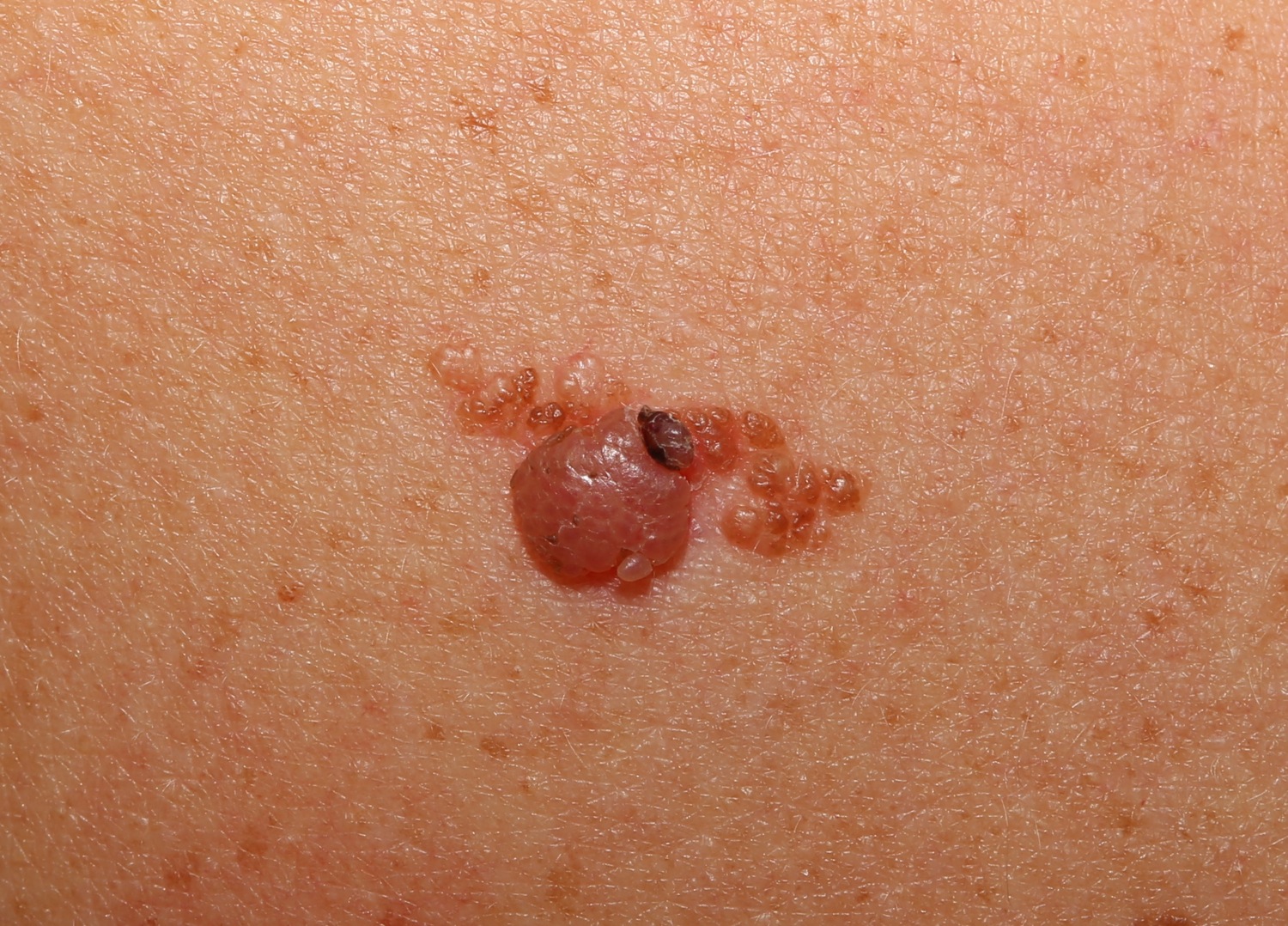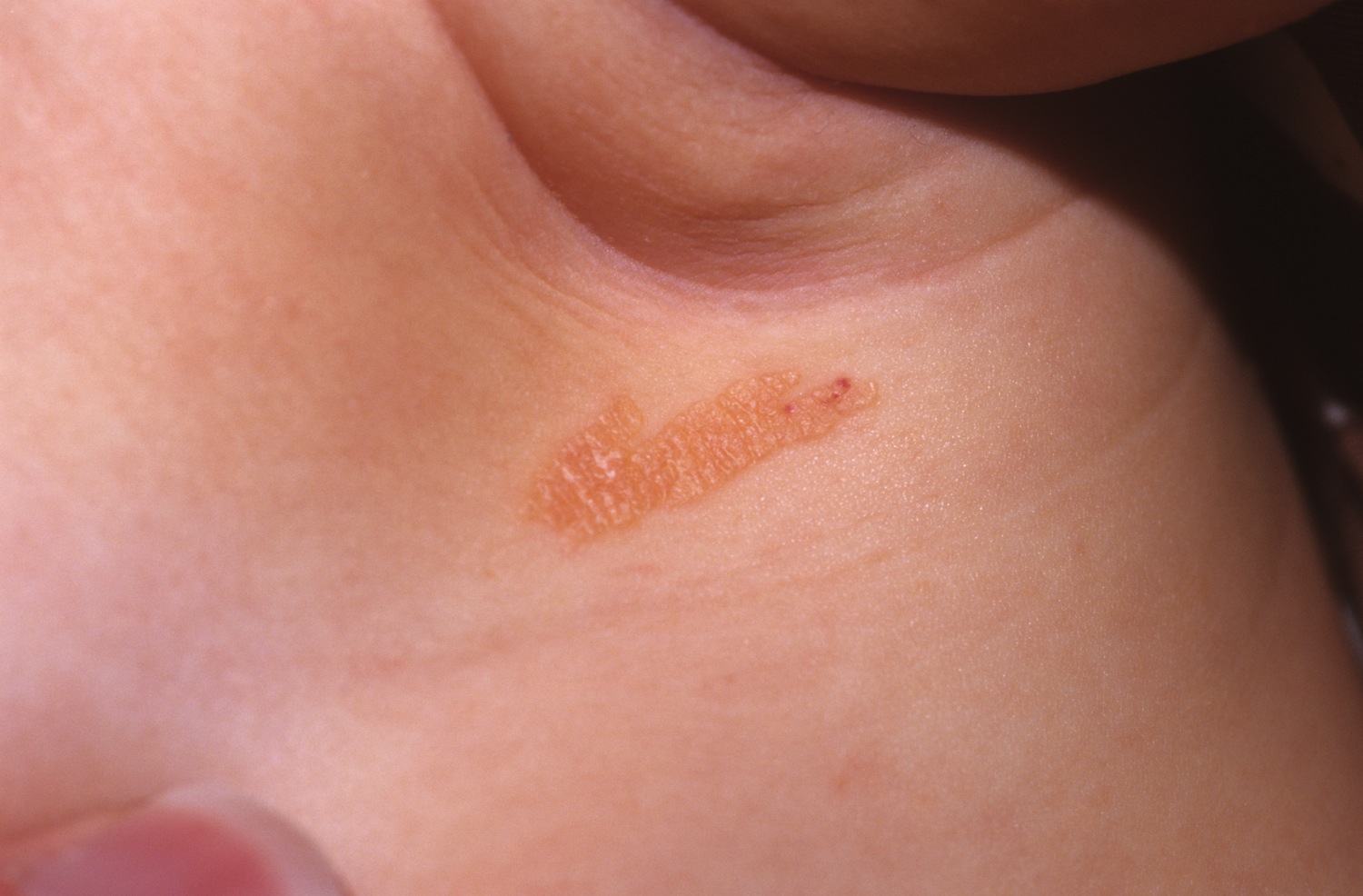
An orangish, papillomatous congenital plaque in the scalp is most typical.

An orangish, papillomatous congenital plaque in the scalp is most typical.
The nevus sebaceous (NS) is a congenital hamartoma of sebaceous glands found most commonly on the scalp and face.
At birth, an orange, red, or yellow plaque is seen, usually on the scalp. Some lesions are linear. Over the ensuing months, with the reduction of maternal hormones, the lesion tends to flatten out. During puberty, under the influence of circulating hormones, the nevus sebaceous will typically thicken again and may resemble a mulberry.
Rarely, a widespread form is seen and is analogous to an epidermal nevus.

Nevus sebaceous on the shoulder of a 22-year-old patient that grew a warty bump. The entire lesion was excised and showed nevus sebaceous with seborrheic keratosis.

Nevus Sebaceous in the axilla.
Homepage | Who is Dr. White? | Privacy Policy | FAQs | Use of Images | Contact Dr. White